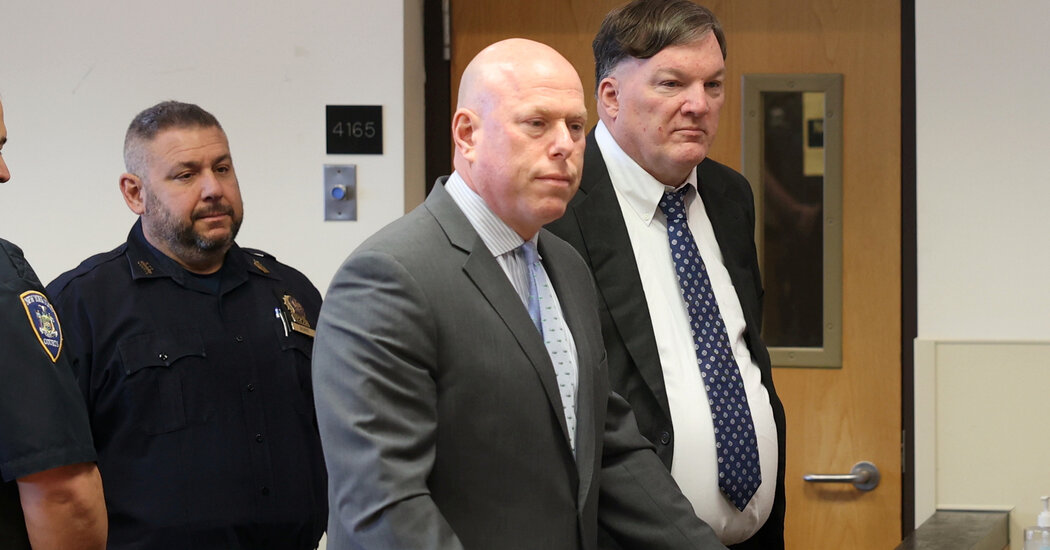Rex Heuermann, who was arrested last summer and has been accused of murdering four women in the Gilgo Beach serial killings on Long Island, was indicted Thursday on murder charges in the deaths of two more women.
Mr. Heuermann, 60, who has pleaded not guilty to all charges in connection with the first four women’s deaths, has remained in jail for nearly a year awaiting trial. In the meantime, investigators turned to the six other victims — four women, a man and a toddler — whose remains, like those of the first four women, were found along Ocean Parkway by Gilgo Beach.
On Thursday, Mr. Heuermann was charged with killing one of them: Jessica Taylor, whose partial remains were found near Gilgo Beach in 2011 and then linked to other partial remains found eight years earlier in a remote wooded area in Manorville, a 45-minute drive east.
He was also charged with killing Sandra Costilla, a 28-year-old New York woman whose remains were found in 1993 in the Hamptons. Her long unsolved murder had not previously been associated with the Gilgo Beach investigation.
The new indictment followed a recent flurry of activity in the investigation: a nine-day canine search completed last month in Manorville and a wooded area in Southampton where Ms. Costilla’s body was found. Last month, investigators also conducted a six-day search of Mr. Heuermann’s home in Massapequa Park, which had been exhaustively searched for two weeks last summer after his arrest.
The Gilgo investigation dates back to late 2010, when investigators discovered the first of 10 victims left along a desolate stretch of Ocean Parkway running east from Jones Beach.
The first four discovered, known as the Gilgo Four, seemed to be the prey of a serial killer. They were all young, petite women bound with burlap, belts and tape. Their bodies had been dumped over a quarter-mile stretch in the previous three years, the authorities said.
Prosecutors used DNA from human hairs found on the tape to connect the bodies to Mr. Heuermann. That plus burner phone records and his internet history linked him to the women and the location where the bodies were found, prosecutors said.
But the other six sets of remains were colder cases with fewer clues and more inconsistent characteristics than the Gilgo Four.
They had disappeared as long ago as the mid-1990s, when mobile phones and internet use were rare — along with the clues they leave. Four were dismembered, and their remains were exposed to the elements for more than a decade.
DNA matches remained so sparse for the six bodies during the first decade of the investigation that only one victim, Ms. Taylor, was identified. In recent years, Karen Vergata and Valerie Mack have been named as victims, while the other three have remained unidentified.
Michael J. Brown, Mr. Heuermann’s lawyer, has challenged the genetic evidence as “one strand of hair” and has floated an alternate theory about the case: that the investigation into the murders was tainted years ago by the involvement of a now-disgraced Long Island police chief, James Burke. Mr. Burke, who oversaw the investigation as head of the Suffolk County Police Department from 2012 to 2015, later became a symbol of police corruption and spent time in federal prison.
